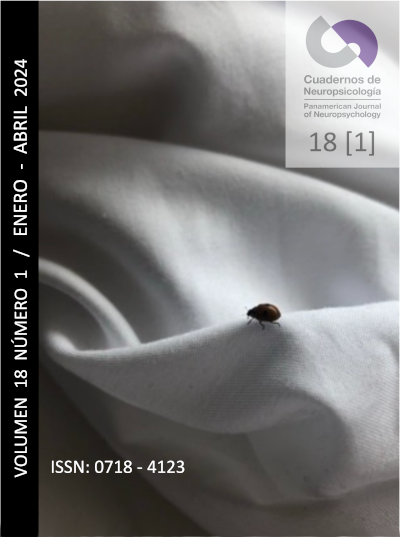Actividad eléctrica del cerebro psicodélico. revisión sistemática sobre estudios clínicos con eeg en estado de reposo
Abstract
RESUMEN
Los Contexto: Los psicodélicos son un conjunto de sustancias que están siendo estudiadas por su potencial terapéutico. Parte del debate actual se focaliza en entender cuáles son los correlatos neurales de la experiencia psicodélica.
Objetivo: Revisar sistemáticamente los efectos de los psicodélicos sobre la actividad espontánea cerebral, enfocándose en el uso del EEG en ensayos clínicos con participantes en estado de reposo.
Método: Se realizó una búsqueda en SCOPUS y PubMed, siguiendo los criterios PRISMA.
Resultados: Se llegó a un total de trece artículos: siete sobre ketamina, cinco sobre ayahuasca y uno sobre psilocibina. Se observa un aumento de la potencia espectral en la banda de frecuencia gamma, y una reducción en delta, theta, alfa y beta. En cuanto a la conectividad funcional, se observaron modificaciones en áreas clave para la cognición.
Limitaciones: Se encontraron inconsistencias entre los estudios, debido a diferencias en la población objetivo y diseño metodológico.
Conclusión: La alteración de ciertas bandas de frecuencia, así como el cambio en la comunicación entre áreas cerebrales superiores, son parte de los correlatos neurales de los psicodélicos.
Palabras clave: EEG, psicodélicos, revisión sistemática, ensayos clínicos, conciencia.
ABSTRACT
Context: Psychedelics are a group of substances that are being studied for their potential therapeutic applications. Part of the current debate focuses on understanding the neural correlates of psychedelic experience.
Aims: To conduct a systematic review of the effects of psychedelics on spontaneous brain activity, focusing on the use of EEG in clinical trials with participants in a resting state.
Method: A search was conducted SCOPUS and PubMed, following PRISMA criteria.
Results: A total of thirteen articles were included: seven on ketamine, five on ayahuasca, and one on psilocybin. An increase in spectral power in the gamma frequency band was observed, along with a reduction in the delta, theta, alpha, and beta frequency bands. Regarding functional connectivity, modifications in brain activity were observed in key areas for cognition.
Limitations: Inconsistencies were found among studies due to differences in the target population and methodological design.
Conclusion: The alteration of certain frequency bands, as well as changes in communication between higher brain areas, are part of the neural correlates of psychedelics.
Keywords: EEG, psychedelics, systematic review, clinical trials, consciousness.
Downloads
How to Cite
Issue
Section
License
Articles published in this journal are protected under the Creative Commons Attribution-NonCommercial-ShareAlike 4.0 International (CC BY-NC-SA 4.0) license. This means that authors retain full rights over their research and publications at all times. As a journal, we fully respect and promote the principles of open access established by this license, allowing the work to be shared, adapted, and distributed for non-commercial purposes, provided that appropriate credit is given to the authors and any derivative works are licensed under the same terms.
Authors are responsible for obtaining the required permission when they wish to reproduce part of the material (figures, etc.) from other publications.
Likewise, CNPs allows authors to host in their personal sites or other repositories that they deem convenient the Final and Definitive Version of the published article with the format assigned by the journal. In no case do we allow access to preprints of the article under evaluation or already published.
When submitting an article to CNPs you are aware that all the contents of CNPs are under a Creative Commons License. In which it is allowed to copy and share the contents freely, always making reference to the origin of the publication and its author.





